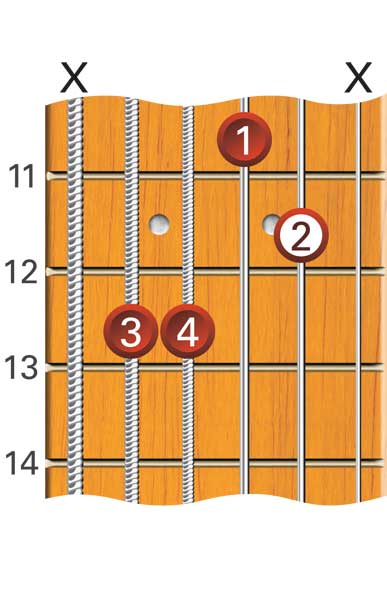
Movable Chords
Here are some movable fingerings for major 7th chords, shown here as Bmaj7. As before, voicings on four adjacent strings are shown first, followed by other useful shapes which relate back to the five basic forms. Don’t forget to transpose them to all keys.
Bmaj7

Bmaj7

Bmaj7

Bmaj7

Bmaj7

Bmaj7

Bmaj7

Bmaj7

Bmaj7

Bmaj7

Bmaj7

Bmaj7

Bmaj7

Bmaj7

Bmaj7

Bmaj7

Bmaj7

Bmaj7

Bmaj7

Bmaj7

Bmaj7

Bmaj7

Bmaj7

Bmaj7

Bmaj7

A good way to become familiar with a new chord type is to concentrate on two or three shapes at a time, using them to play a simple progression as shown in the following example. The progression alternates between two chords, but the same shape is not used every time the chord symbol appears. Play the following example using the shapes indicated in the notation, then try others.
Shape 1

Shape 2

Shape 3





Seventh


A dominant 7th chord (usually just called a 7th chord) is created by adding a flattened 7th degree to any major chord. For example, a C7 chord contains the notes C, E, G and Bb (1, 3, 5 and b7). The following diagrams demonstrate some common open dominant 7th chord shapes.